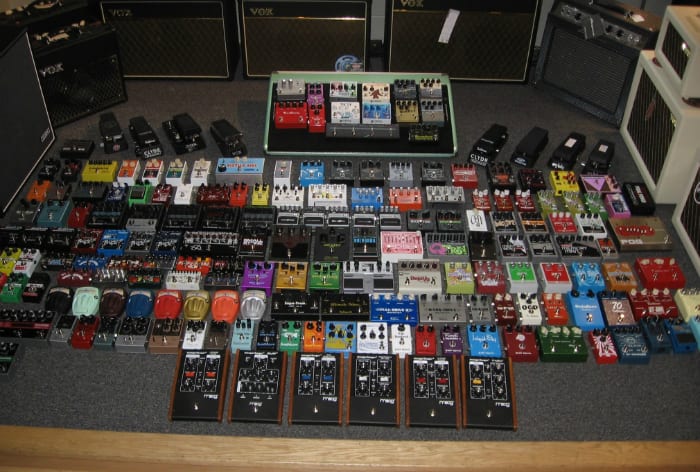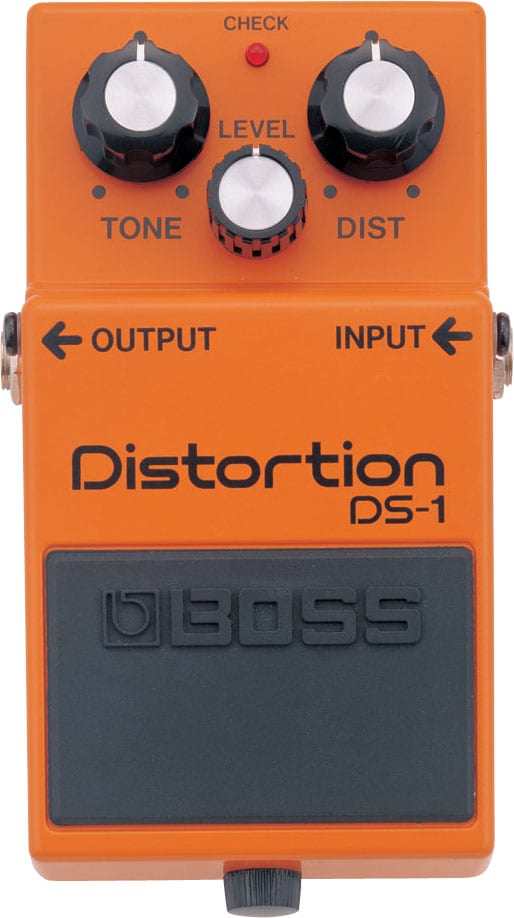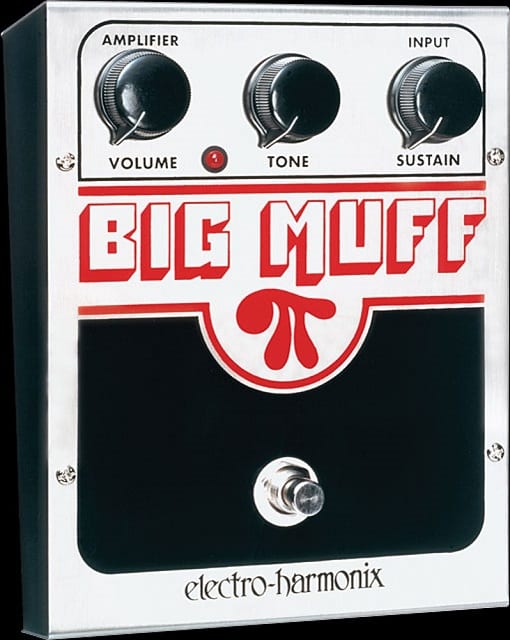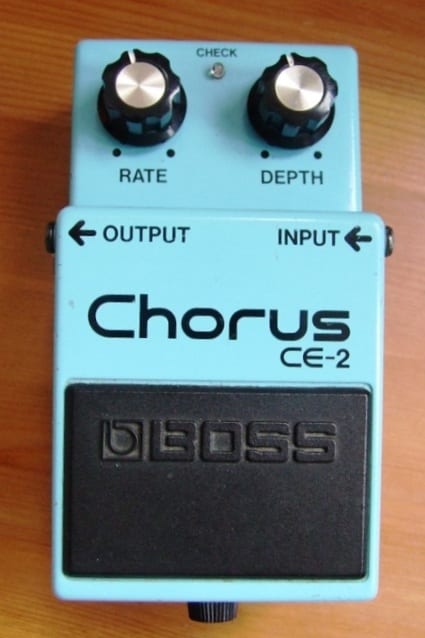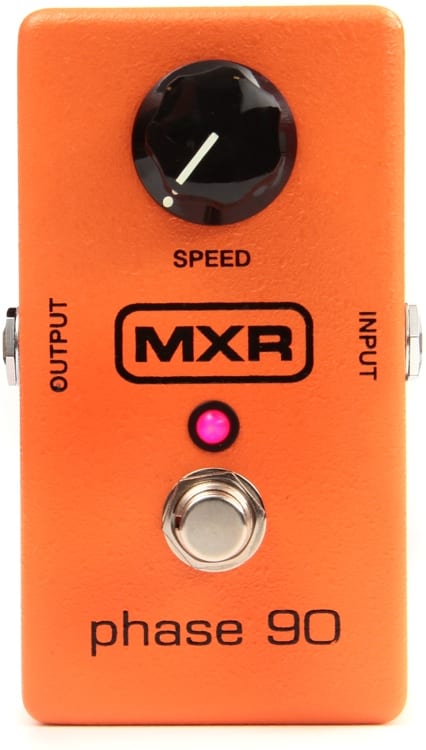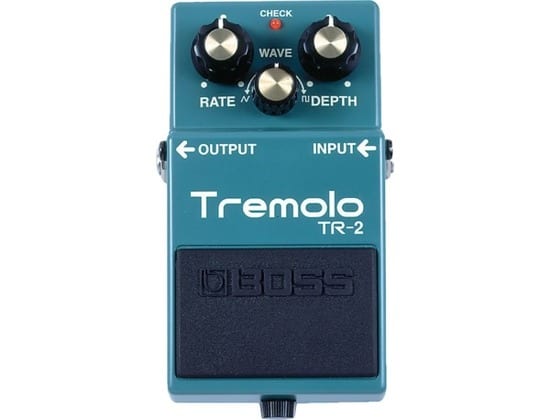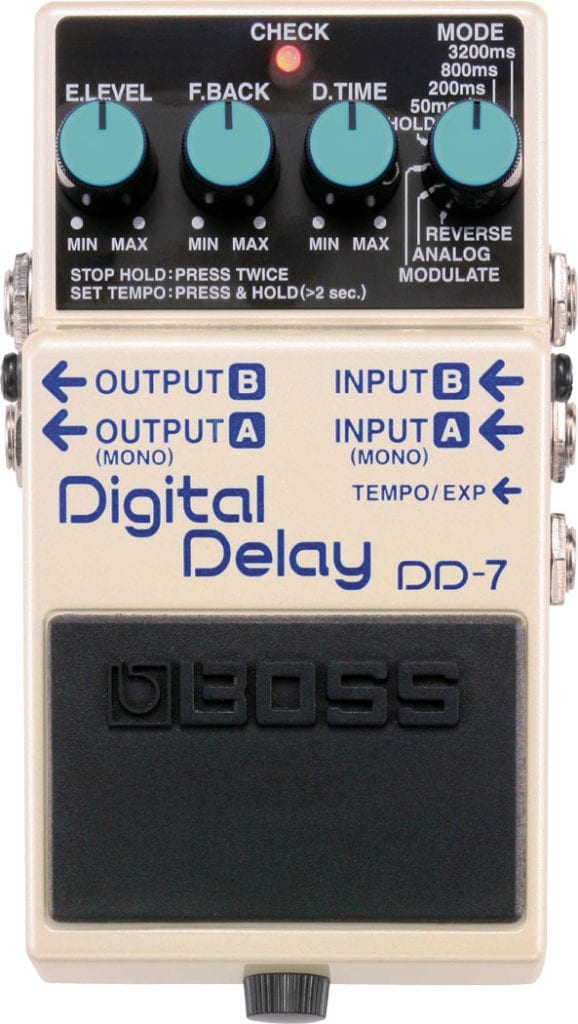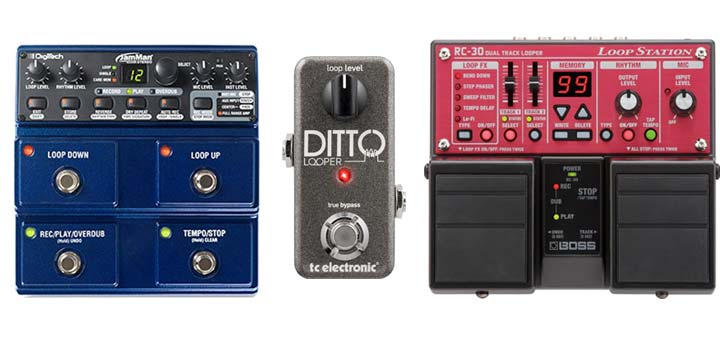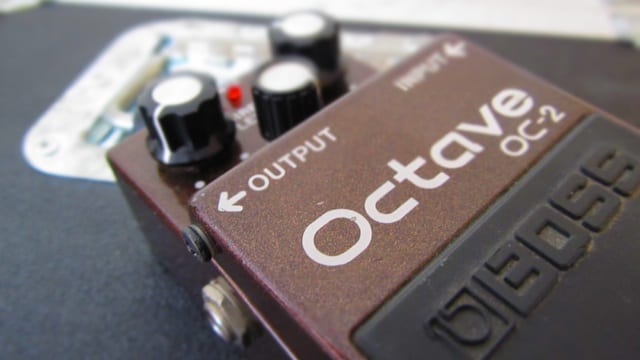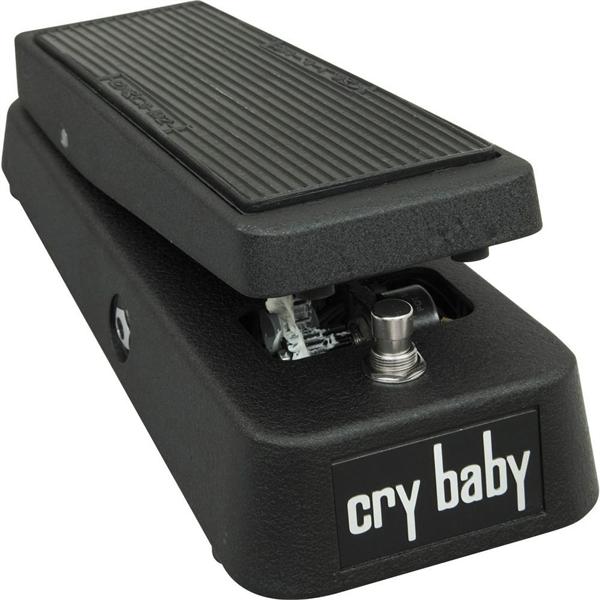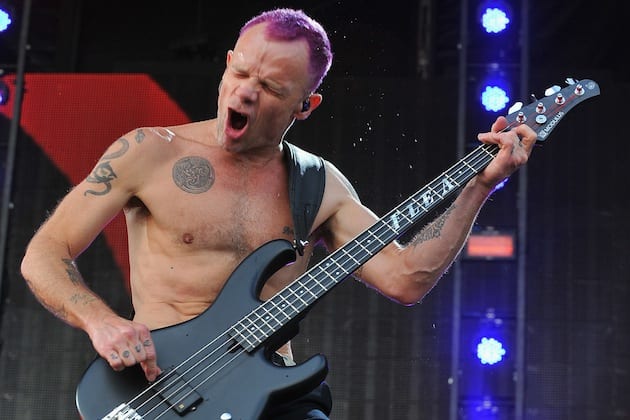Welcome to our ultimate guide on effects pedals. We’re going to show everything you need to know about effects pedals. Let’s get started!
In this free guitar lesson you will learn:
- The no1 secret to using effects correctly.
- 2 quick & easy hacks that will show you how to set up your guitar effects quickly.
- How to use guitar effects to make everything you play sound amazing.
Over 100,000 guitar-learners get our world-class guitar tips & tutorials sent straight to their inbox:
Click here to join them Get our best guitar tips & videos
What Are Guitar Effects?
The term ‘guitar effects’ is thrown around a lot by guitarists. But what exactly are they?
The clue is in the name really, a guitar effect is something which changes the sound of your guitar. There are hundreds of guitar pedals out there, but they all do the same thing.
They all change the sound of your guitar in some way or another.
Some tone purists out there are completely against the idea of guitar effects, however guitar effects can really take your playing from zero to hero.
Effects are a great way of adding inspiration and character to your already awesome guitar playing.
Broadly, there are 4 main effect types, these are:
- Distortion.
- Modulation.
- Delay/Reverb.
- Miscellaneous.
If you can have a solid understanding of what each of these effect types does, then you’re well on your way to becoming an effects guru.
Let’s take a look at each of these effects in more detail.
Guitar Effects – Distortion
This is one of the most common guitar effects of all time, often when people think about electric guitars, distortion is the first effect which comes to mind.
Distortion is often referred to as a number of different things, here are a few examples:
- Overdrive.
- Boost.
- Gain.
- Fuzz.
You may have seen these terms thrown around frequently in the guitar world, however they all refer to the same thing.
Distortion is a classic guitar effect, distortion can be described as a crunchy, aggressive sound. It is usually found in the following genres:
- Rock.
- Metal.
- Blues.
- Country.
Even though the sound can be quite aggressive, using distortion is a great way of adding character to your guitar tone.
When can I use distortion?
It’s important to use distortion sparingly as it can often be overpowering when playing electric guitar. However, there is something attractive about cranking up the gain on your amp and rocking out.
Distortion is often used in specific genres; for example, if you’re playing a rock song, there’s a high chance that you’ll use distortion for most of the song.
However, if you’re playing a blues tune, you may only use a bit of distortion for your guitar solo or for some specific parts in the song. It's hard to understand which scales work with which keys.
So we created a cheat-sheet! A key and scale-finder that you can use again and again. Get a custom guitar-learning plan here: Click here for GuitarMetrics™ Learn from the world's best guitar educators: Click here for our guitar courses
Download our lead guitar cheat-sheet to make things easier
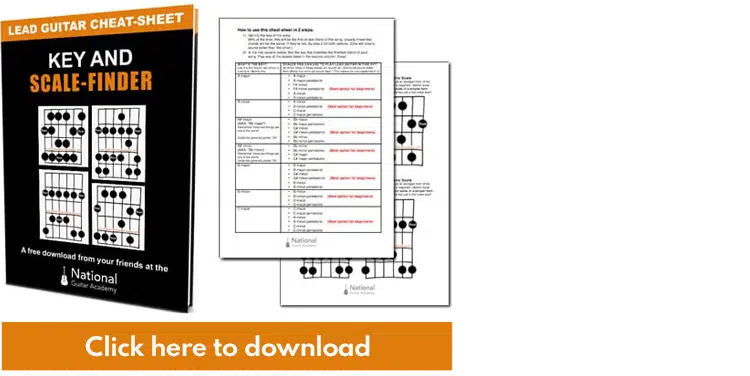
Get your personalised guitar-learning plan 🎸
World-Class Guitar Courses 🌎
What are some common distortion pedals?
The three most famous distortion pedals are:
- The Boss DS1.
- The Ibanez Tube Screamer.
- The Electro Harmonix Big Muff.
The Boss DS1
The boss DS1 is a classic distortion pedal and was frequently used by guitarists such as Kurt Cobain, John Frusciante and Steve Vai.
The Ibanez Tube Screamer
The ibanez tube screamer is an overdrive classic and was often used by guitarists like John Mayer, Stevie Ray Vaughn and Joe Bonamassa. This pedal is perfect for blues purists.
The Electro Harmonix Big Muff
The electro harmonix big muff is perfect for those huge distorted tones. If you want your guitar to sound like it’s on fire, you need to get yourself a big muff.
Guitarists such as David Gilmour, Jack White and Dan Auerbach have been known to his this useful.
Guitar Effects – Modulation
Modulation is essential the sound of the 80s. Whenever you hear a guitar effect which sounds swirly or a little bit out there, chances are you’re listening to some modulation.
There are 4 main modulation guitar effects, these are:
- Chorus.
- Phaser.
- Flanger.
- Tremolo.
Let’s break each one down.
Modulation Guitar Effects – Chorus
Chorus adds thickness and warmth to a guitar sound. To listen to an example of the chorus effect, check out this video of ‘Every Breath You Take’ by The Police:
Can you hear how the guitar has a greater depth to it?
Also, if you turn up the speed knob on a chorus pedal, it can create a faux leslie effect.
Join over 100,000 guitar learners and subscribe to our guitar-tips-by-email service. (It's free.) We'll send you a series of lessons that will move you to the next level of your guitar journey. Learn how everything fits together quickly, easily and effectively. We share ninja tips (for instant fun!) but also timeless fundamentals that will deepen your understanding. To become a better guitarist click here to see our guitar courses Want us to make a guitar-learning plan that is customised to you? Click here for GuitarMetrics™Want free guitar tips and video lessons delivered to your inbox?


Get our best guitar tips & videos
Our Guitar Courses
Get your personalised guitar-learning plan 🎸
What are some common chorus pedals?
The most famous pedal is the Boss CE2. This was used throughout by guitarists such as Andy Summers, Kurt Cobain and The Edge.
Modulation Guitar Effects – Phasers
Phasers can be used to create swooshing sound which pulses through your guitar signal. Phasers are have been heard in many genres and are a staple on many guitarists pedalboards.
Rock players like them to add a subtle movement to their solos and funk guitarists like them as they add depth and richness to a rhythm part.
Guitarists such as Joe Walsh, Eddie Van Halen and John Frusciante are known for using phaser pedals.
Here’s a great example of a phaser in action:
What are some common phaser pedals?
The most common phaser pedal is the phase 90. This has been spotted on countless famous guitarists pedalboards, it’s a classic!
Modulation Guitar Effects – Flanger
The flanger effect tends to be a little less common than a chorus or a phaser. Flangers are a little bit more psychedelic sounding and create some weird and wonderful tones.
A flanger adds a unique sound which can make your guitar sound like an aeroplane taking off. Used in the right place, you can take your guitar tone to another dimension.
Where can I hear a flanger pedal?
Flangers have been used by guitarists such as Dave Grohl, Lenny Kravitz and Zakk Wylde. Here’s a video of Paul Gilbert demonstrating some awesome flanger tones:
Modulation Guitar Effects – Tremolo
The tremolo effect was actually one of the first guitar effects which was created. Tremolo often featured on old fender and vox amps from the 1960s.
Once the effect developed and became popular, the effect then made it’s way into a smaller stompbox.
A tremolo effects ‘creates’ a cutting sound which ‘segments’ the audio.
Where Can I Hear The Tremolo Effect?
One of the most famous recordings of a tremolo effect is on Green Day’s track ‘Boulevard Of Broken Dreams’. Watch the video below to hear this effect in action.
Can you hear how the guitar sounds like its spliced up? This is a great example of a tremolo effect.
This effect has also been used by guitarists such as Hank Marvin, Keith Richards and Duane Eddy.
✅ Stop struggling. Start making music. ✅ Learn beginner-friendly versions of every chord. This is our most popular guide and it will improve your chord ability quickly! 😎 Get a custom guitar-learning plan here: Click here for GuitarMetrics™ Learn from the world's best guitar educators: Click here for our guitar coursesLearn 12 EASY beginner chords with our popular guide


Where should we send it?
Get your own personalised guitar-learning plan 🎸
World-Class Guitar Courses 🌎
Guitar Effects – Delay And Reverb
Delay and reverb are often used to create ambience. These guitar effects can make you sound absolutely huge! Let’s take a look at each effect in more detail.
Guitar Effects – Delay
Delays are used frequently in all types of music such as rock, country and pop. All a delay effect does is repeat the note that you play into it.
For example, if you strum a chord, the delay will then repeat that chord for as long as you want it too.
The delay effect has a few applications, some people use it for killer solos and others use to add thickness and ambience to their guitar tone.
Where can I hear the delay effect?
Delay has been used by countless guitarists over the years such as Joe Satriani, The Edge and Andy Timmons.
Here’s an example of The Edge using some classic delay tones:
Can you hear how the each of his notes are repeated very quickly? This is a great example of the delay effect.
Guitar Effects – Reverb
Just like tremolo, reverb is used on almost EVERY guitar amp out there. It’s perfect for adding a bit of ambience to a track.
If you find your initial guitar tone a little bit stale, try adding a dash of reverb. It can really bring your sound to life.
Where can I hear reverb in action?
One of the best examples of reverb is on Jeff Buckley’s version of Hallelujah. His guitar here is drenched in reverb and sounds gorgeous!
Reverb is an effect which has been heard on countless recordings and is one of the few effects out there that can be created in a natural environment.
Guitar Effects – Miscallenous (Weird & Wonderful Effect Types)
In the ever growing age of technology, there has been some pretty crazy effects which have been created by effects gurus across the world.
Even though this is great for guitarists, it can also be a little bit daunting as there are so many different types.
We’re going to keep it really simple and discuss four popular guitar effects which are less common distortion, modulation and delays.
Loop Pedals
Loop pedals became popular when Ed Sheeran rose to fame. A loop pedal works as a ‘phrase sampler’.
You press record on the pedal, and then play something into the pedal.
Once you’re happy with what you’ve recorded, you press stop and this will loop around forever!
Here’s looping master Ed Sheeran in action demonstrating just how cool this effect is:
Octave Pedals
Octave pedals double your original guitar signal and add another note which is either directly an octave down or above.
This is perfect for adding texture and thickness to your guitar part.
Two piece bands such as ‘The White Stripes’ and ‘Royal Blood’ have made great use of this effect.
Octave pedals can really enhance your guitar sound and make you sound huge.
Here’s a video of Royal Blood making full use of the octave pedal:
Compressor Pedals
Although compressors are mainly used as studio tools, compression effects are used frequently by funk and country guitarists.
Compression does what it says on the time, it compresses your guitar sound.
A compressor will level out any peaks in your sound, so if there are certain spikes in high and low frequencies, the compressor will adjust those effects until they are at a decent level.
Compressors have been used by artists such as Brent Mason, Nile Rodgers and John Frusciante.
To hear a compressor in this action, listen to this funky guitar part in ‘Get Lucky’ by Daft Punk
The Wah Pedal
The wah pedal is one of the most iconic sounds in guitar history. It’s hard to imagine what guitar music would sound like without a wah pedal.
Wah pedals are controlled by your foot; when your heel is down the wah creates a bassy sound, when your heel is up the wah creates a brighter sound.
Here’s some classic footage of Jimi Hendrix rocking out on a wah-wah pedal:
The wah pedal was made famous by Hendrix but has also been used by artists such as John Frusciante, Frank Zappa and Mark Knopfler.
Want to know what the top 50 stompboxes, devices and processors of all time are? Then check out this cool article by Guitar World:
The Top 50 Stompboxes, Devices And Processors of All Time | Guitar World
When Should You Use Guitar Effects?
It’s important when using guitar effects that you use them sparingly. In no way should effects complete colour your original guitar tone, guitar effects should be the icing on top.
The effect you use often depends on the guitar part you are playing, for example if it’s something funky you may want to use a phaser or a wah-wah.
Or if you’re rocking out on some huge riffs, you may want to have the distortion on.
As long as you pick your moments wisely, you’ll be well on your way to tonal heaven!
Using Effects Live
Many guitarists don’t realise that it’s an art form within itself to use guitar effects live.
There are loads of factors that you have to consider. Here are a few pointers which will help you master guitar effects in a live setting.
Tip #1 Practice Activating Your Pedals At The Right Time
It takes HUGE skill to be able to activate your pedals at the right time. There’s nothing worse than having the wrong effect on for a section.
It’s vital that you practice your tunes at home WITH your pedals.
Here are a few pointers which will help you nail your patch changes:
- Time your exits and entries when using certain effects.
- Practice moving between each patch whilst playing through your songs.
Tip #2 Don’t Over-Complicate Things
There’s a general rule when using effects pedals live, the more you have, the harder they become to manage!
Try and keep your set-up simple. Only use a couple of pedals that you need, don’t use any pedals that you’re never going to use.
Tip #3 Get A Pedalboard And Organise Your Sounds Before The Gig
There’s nothing worse than getting to a gig, grabbing all your pedals out the bag and then trying to assemble them 5 minutes before you’re about to go on.
Be wise, get yourself a decent pedalboard, assemble your pedals and dial in your sounds before the gig.
This way, you will be organised and ready to rock the stage.
Take our 60-second quiz & get your results: Take The Quiz Click here to learn more about National Guitar Academy membership Look cooler! Check out our merch: Click here to see our merch store Join over 100,000 guitar-learners and subscribe to our guitar-tips-by-email service. (It's free.) We'll send you a series of lessons that will move you to the next level of your guitar journey. Learn how everything fits together quickly, easily and effectively. We share ninja tips (for instant fun!) but also timeless fundamentals that will deepen your understanding.What Type of Guitarist Are You?
Join the world's best online guitar school 🌎
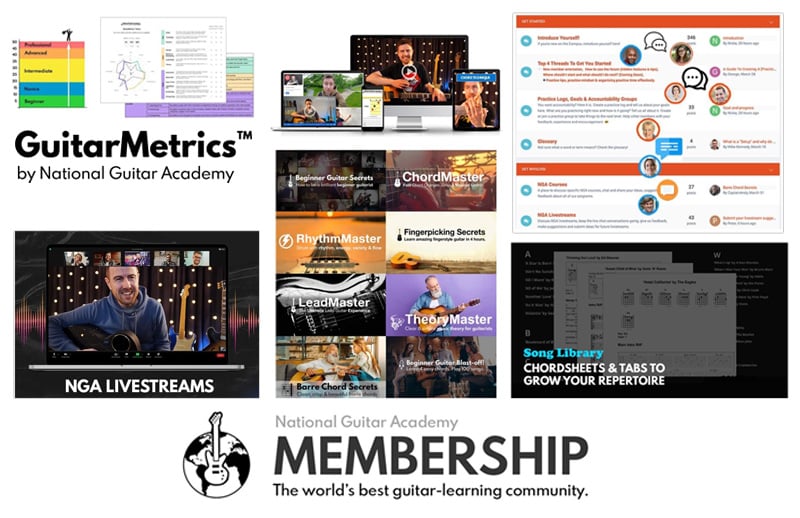
Cool Guitar T-shirts 😎
Want free guitar tips and video lessons delivered to your inbox?


Get our best guitar tips & videos
How To Learn Guitar: An 11-Step Programme For Beginners How To Choose The Perfect Beginner Guitar Learn about National Guitar Academy: About Us Join us on Facebook for daily guitar tips. Listen to our Learn Guitar Podcast for rapid guitar progress. Check out our free chord lessons.Popular Lessons
More Cool Guitar Stuff


